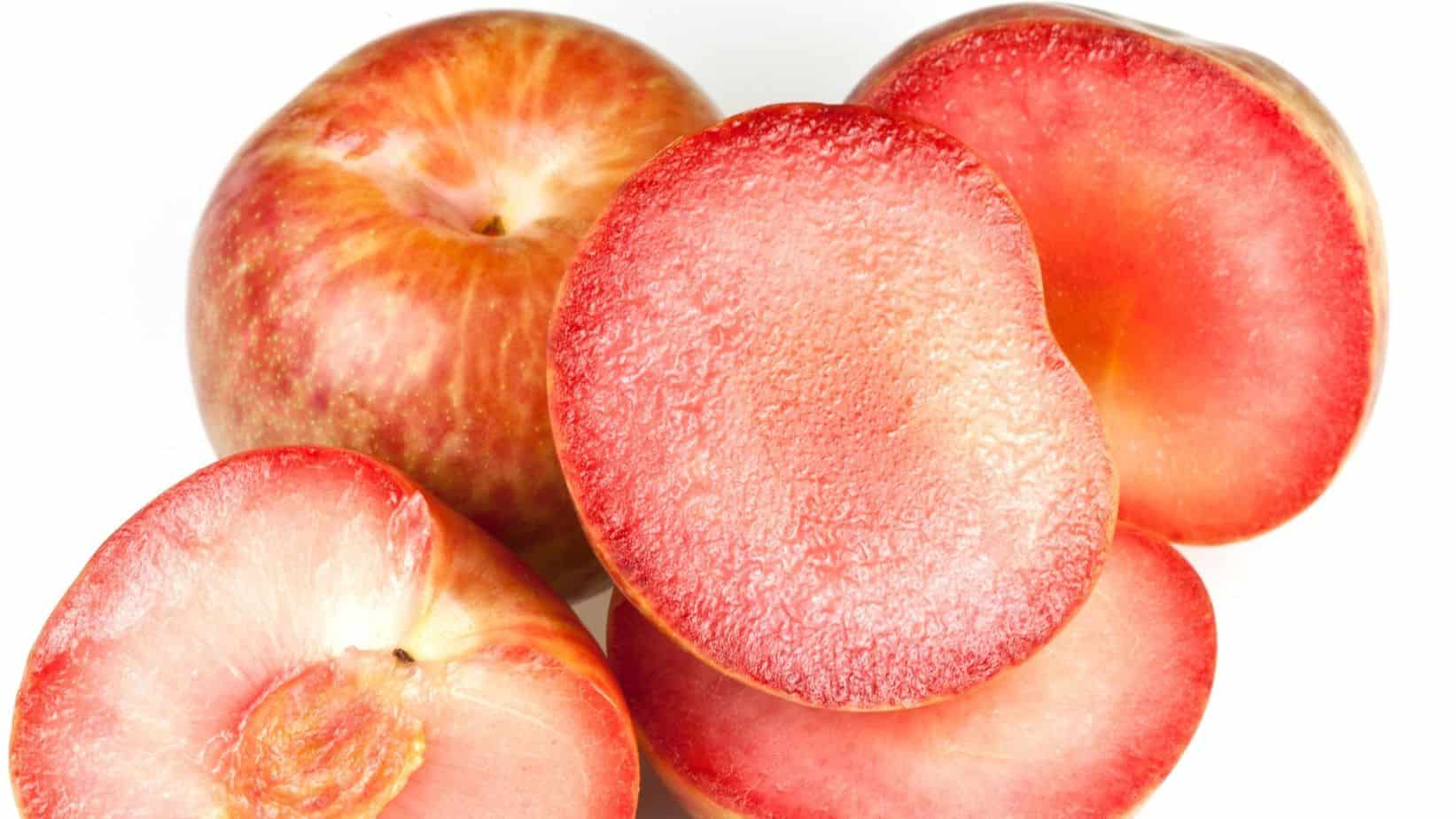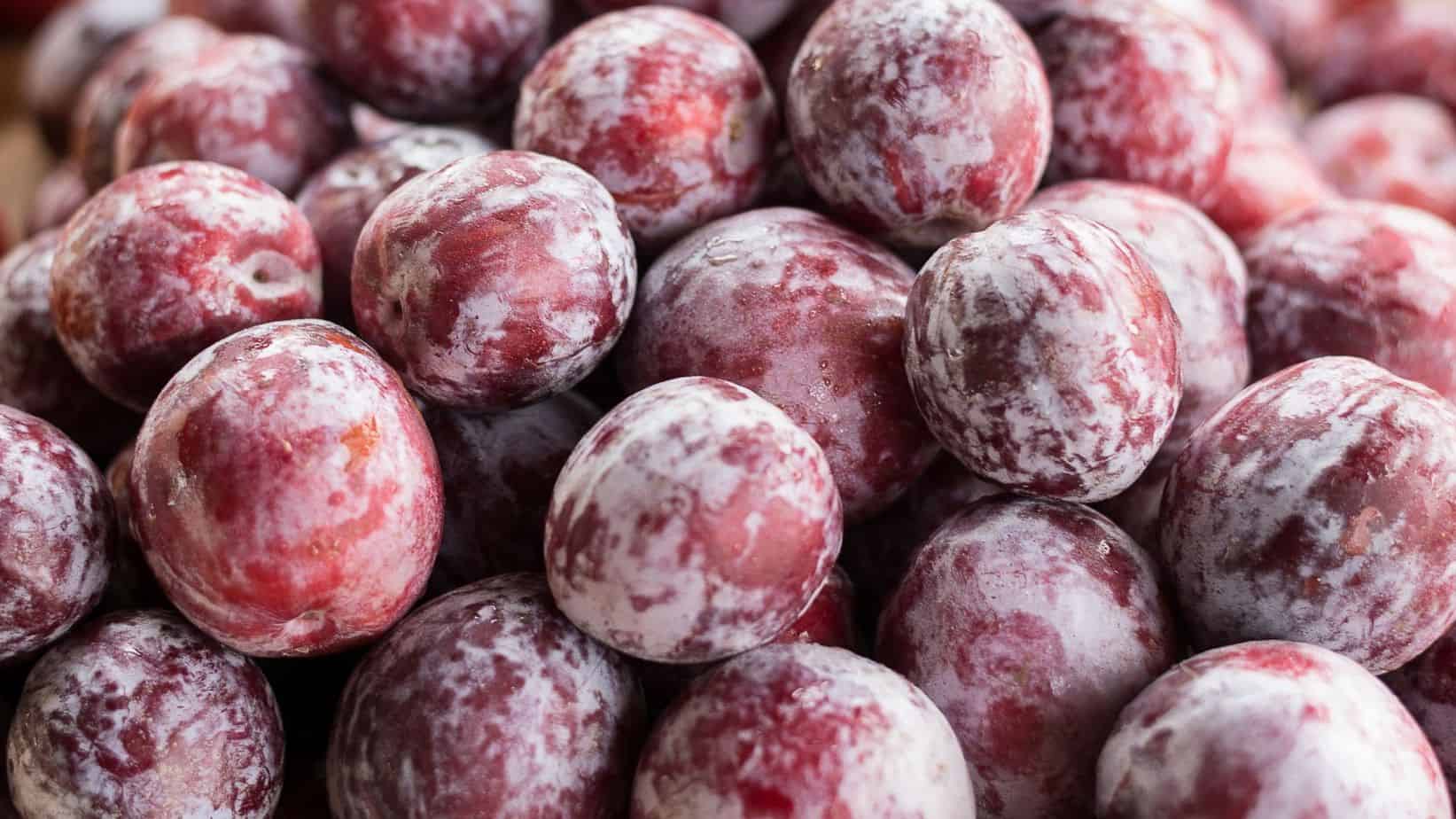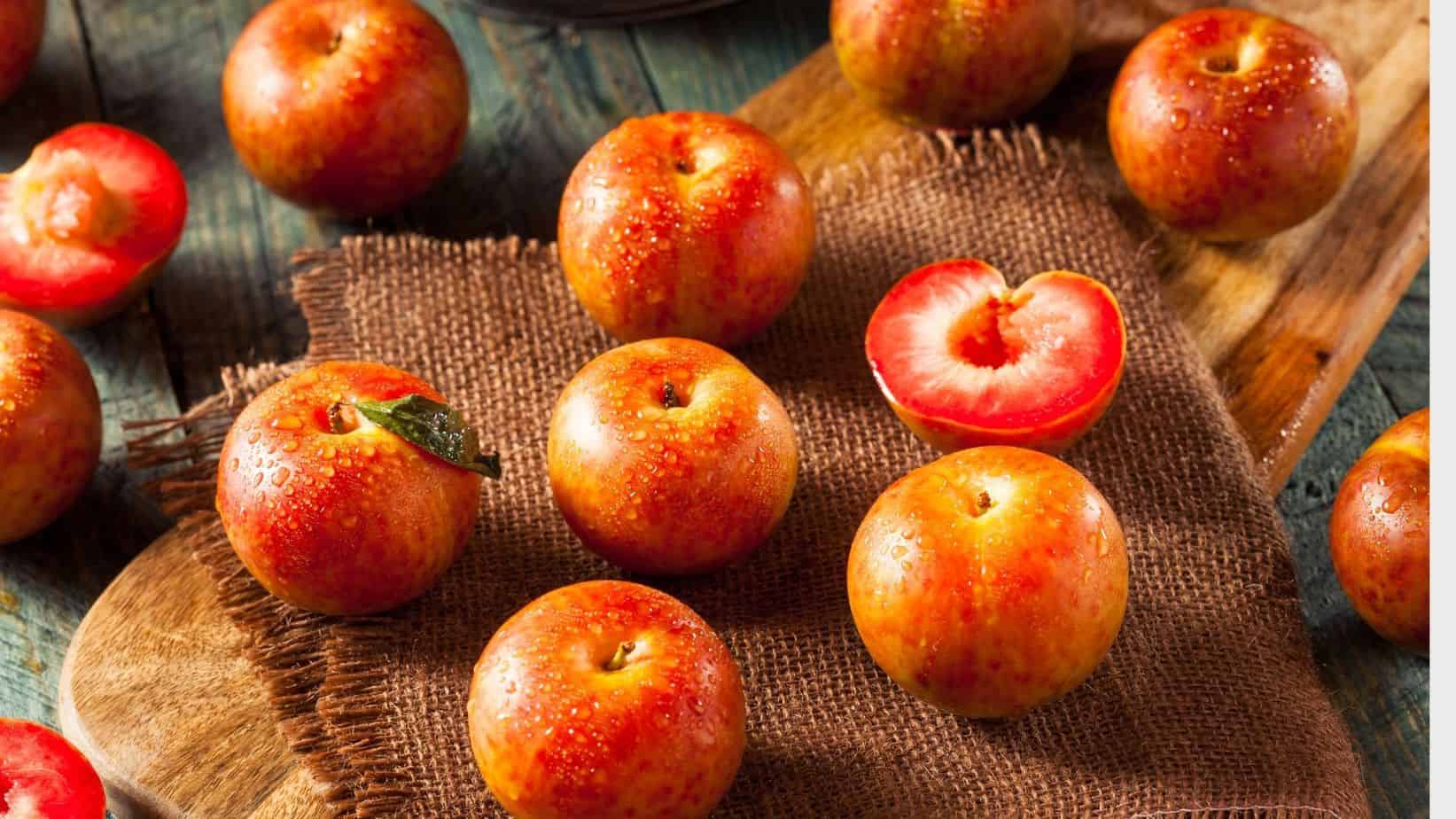
The pluot — a funny-sounding fruit that one might hesitate to say out loud, but one worthy of the effort. They’re sweet, high in vitamin C, and low in calories. The pluot sounds a lot like our next favorite fruit, and it could be yours too. If you’re curious about this hybrid fruit, read on as we attempt to do it justice in the article below.
What is a Pluot?
Let’s get one thing straight: the pluot fruit is different from the equally nutritious plum. Sure, it may sound like it. Not to mention, it bears an uncanny resemblance to the plum fruit too. However, they differ in both flavor and texture.
The pluot looks like a plum with spots and smooth skin on the outside. Inside, the texture is similar to that of an apricot. This is because the pluot is a hybrid fruit that is 75% plum and 25% apricot.
It takes on all of the things that we love about apricot and plum, making it an absolute treat to the taste buds.
A Brief Background

Before the pluot, there was the plumcot. The plumcot was a plum apricot hybrid developed in the 19th century by Luther Burbank. This particular fruit was made out of equal parts apricot and plum. While this specific hybrid fruit did not gain much popularity, it set a powerful precedent for other horticulturists and plant breeders.
Enter Floyd Zaiger.
Building on Burbank’s experimentation, Zaiger introduced a new hybrid between plum and apricot in the 1980s. The difference this time was that the fruit favored the characteristics of the plum by 75% and was combined with 25% apricot. This was how the pluot fruit was introduced.
Pluot Varieties
Zaiger did not just release a single type of pluot fruit. In fact, he developed a variety of these sweet and flavorful hybrid fruits.
He experimented with plum and apricot combinations, adjusting them as he saw fit. Of course, other growers have also contributed to the pluot family, varying in percentages of apricot and plum.
The different varieties of pluots usually vary in color — ranging from dark red to purple. However, regardless of its color, the fruit’s sweetness remains a unifying characteristic.
Popular Varieties:
Dapple Dandy (also known as Dinosaur Egg)
The Dapple Dandy is also called the ‘Dinosaur Egg.’ It has yellow/green skin that turns maroon and yellow. It tastes like a mixture of apricot and plums.
Flavor Royale
Flavor Royale pluots have green-yellow skin with red speckles. The bright red flesh is very sweet and juicy.
Black Nectar
Black nectar pluots have dark black outer skin and juicy dark red flesh and have a sweet cherry-like flavor.
Flavor Heart
Flavor Heart pluots are named for their tapered heart-like shape. The outer skin is dark purple, and the inner flesh is golden yellow. They have a sweet and juicy flavor.
Santa Rosa
The Santa Rosa pluot is almost completely round with a gently indented seem that runs tip to stem. It has thin deep, ruby-red skin and orange flesh that is firm yet tender. It tastes like a fruit punch.
Emerald Drop
Emerald Drop pluots are round with emerald-green skin and light yellow. It is sweet, crisp, and juicy.
Pluot Fruit Benefits

Much like the plum fruit, pluots are made up of a combination of vitamins C and A, fiber, and potassium. Its benefits are quite similar to that of plums:
Improved Immune System
The high content of vitamin C in pluots helps boost immunity and repair cells. It’s the perfect complement to a well-rounded diet.
Improved Heart Health
Similar to plums, pluots are known to reduce the effects of bad cholesterol too. By incorporating these into your diet, you can reduce the risk of cardiovascular diseases.
Reduced Constipation
Plums (or their widely known dehydrated version: prunes) are perhaps best known for their ability to regulate bowel movements. Thanks to their high-fiber content, Pluots are beneficial to your body for the same reasons as well. It treats constipation and encourages your body to stay regular.
Pluot Recipes
Don’t get us wrong — pluots are sweet and flavorful fruits that are best consumed fresh and uncooked. For most of us, it’s only a matter of washing and taking a bite out of these stone fruits. However, its versatility makes for the best ingredient in the kitchen too. From pluot crumbles to pies to salads, they are a fun addition to some of your favorite dishes.
Pluot Jam Recipe

Want a sugary treat to spread on your toast? Or perhaps something to top your vanilla ice cream treat with? A pluot jam is easy to make and can be topped on just about anything.
Here’s what you’ll need:
- Half a pound of ripe pluot
- ½ tablespoon of lemon juice
- 3 tablespoon honey
- A pinch of kosher salt
Instructions:
- Mix the ingredients in a small saucepan and bring to a boil
- Stir constantly until the ripe fruit is broken down and the texture becomes thick
- Cool and serve. Refrigerate your pluot jam if there are any leftovers.
Shopping for Pluots
When it comes to choosing pluots, you can shop for them as you would with plums. Choose the sweet-smelling ones, keeping in mind that they should be firm but not too hard. The different varieties will differ in color, but a mark of a good one will largely be on the vibrancy of the color — whether purple, or reddish, or a dark maroon color.
If you like dried fruit, you can buy delicious dried pluots from Amazon.
FAQs
How to Pronounce Pluot
To pronounce “pluot,” say the first syllable like “plu” in “plum” and the second syllable like “uht.” It should sound like plu-uht.
When Are Pluots Ripe?
You can tell if a pluot is ripe by gently squeezing it. It’s ripe and ready to eat if it has a little give. Additionally, ripe pluots have a sweet and fruity aroma. Avoid ones that are overly soft or have brown spots.
Where Are Pluots Grown?
Pluots are mainly grown in the United States, particularly in California. They are also grown in other countries with warm climates, including Spain, Chile, and Italy. Pluots thrive in well-draining soil and plenty of sunlight.
What Is a Pluot Tree?
A pluot tree is a hybrid of a plum tree and an apricot tree that can grow up to 15 feet high. They produce fruit resembling a plum in shape but with the flavor characteristics of both plums and apricots.
When Are Pluots in Season?
Pluot season typically begins in May and can last until October. The peak of the season is during the summer, which is when you’ll find the most variety and best-tasting ones. Be sure to enjoy them during this time!
